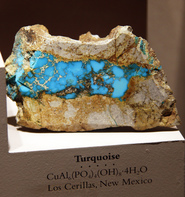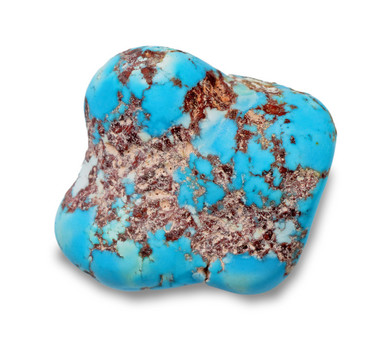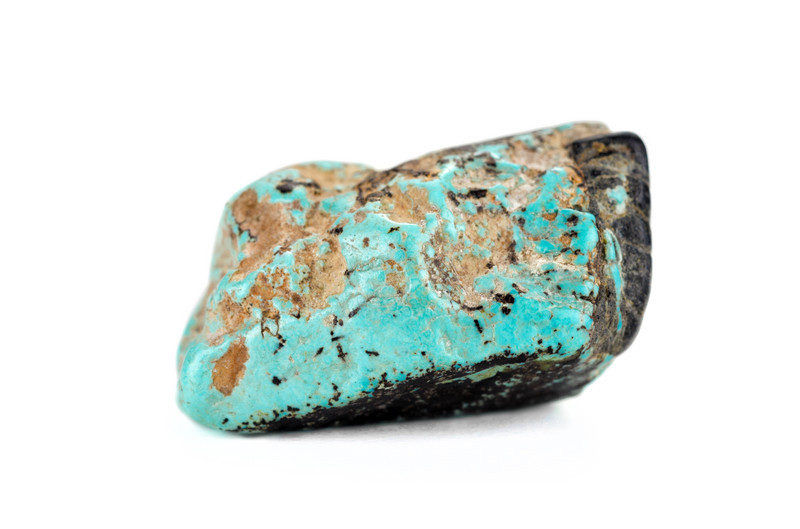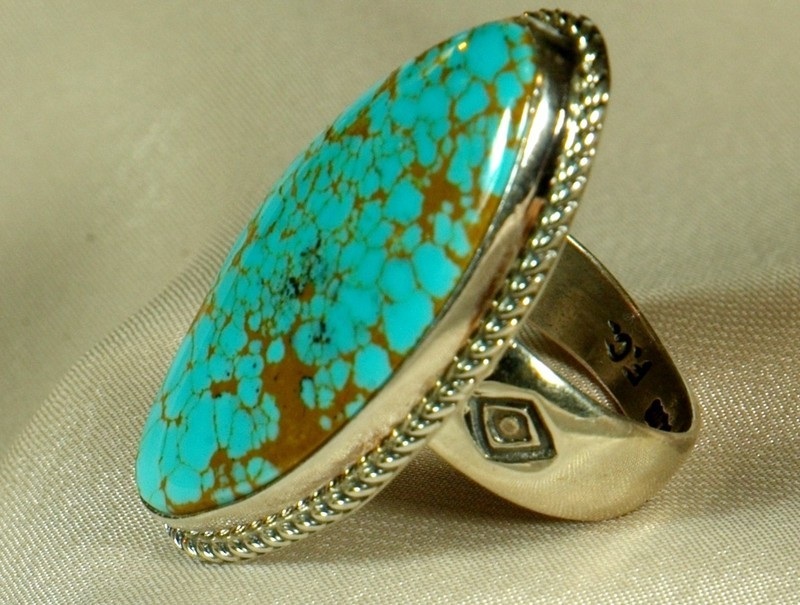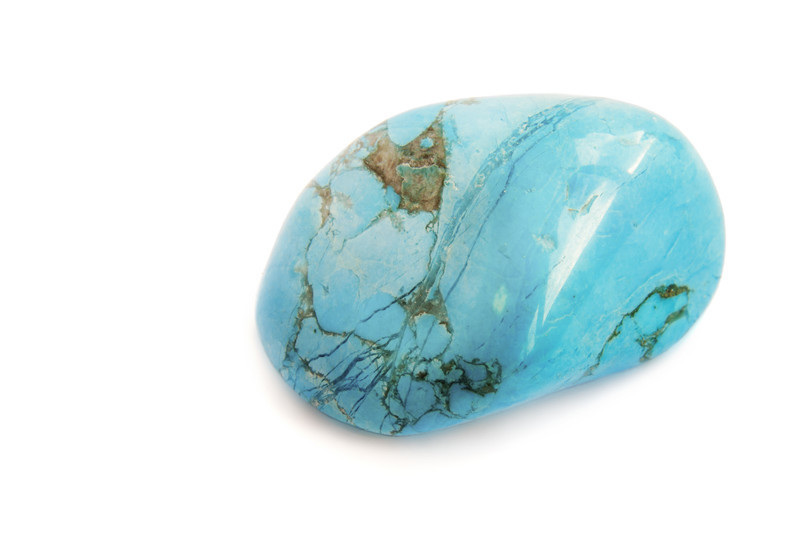|
Turquoise Gemstone Sources
Turquoise Gemstone is formed by the action of percolating ground-waters in aluminium-bearing rocks containing copper. The finest Turquoise Gemstone comes from Nishabur area in Iran. However the Iranian material virtually mined out now and so is very rare and valuable. Now USA produces the best Turquoise. It is also found in Afghanistan, Australia, Brazil, Chile, China, Mexico, Russia, and Tanzania. You can find our interactive map for gemstone of the world Here.
Turquoise Gemstone Treatment
|
Unfortunately, much of the turquoise that comes out of the mines is pale and has a rather greenish tinge which is not as attractive. Therefore, depending on the quality of Turquoise Gemstone three main techniques is used to bring the quality of the gemstone up to be acceptable levels. These are 1) reconstructing or pressing turquoise; turquoise powder and small chips are bonded with liquid plastic resin, dyed and then baked, 2) stabilizing and coating turquoise; due to its porous nature it is hard to work with therefore it is stabilized or coated by soaking the rough material in an artificial resin (wax or plastic, the plastic-impregnated stones are probably permanently improved, but waxing is less permanent), and 3) enhancing turquoise; this means dying or improving the color of turquoise.
|
|
Turquoise Gemstone in Jewellery
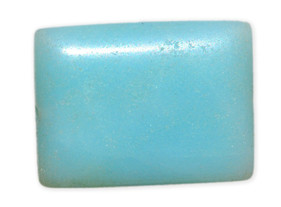 Turquoise Pakistan
Turquoise Pakistan
Turquoise gemstone has been used for jewellery from remote antiquity. Turquoise was used by Aztecs in mosaic work on ritual masks and other ornaments. Today, turquoise gemstones are cut cabochon in round or oval from and are polished with Linde A on leather. Due to its low specific gravity, turquoise feels light in weight; therefore it is ideal for large jewellery pieces. You can shop for turquoise jewellery from link below (amazon.com) or alternatively shop from our Amazon-powered store Here.
Turquoise Gemstone Care
As Turquoise is relatively soft gemstone it should be stored separately in a cool, dark box in acid-free tissue papers. Turquoise gemstone should not come into contact with cosmetics, hairspray, perfume or household chemicals. Due to its soft nature ultrasonic cleaning and commercial chemical cleaners should not be used to clean this gem stone. Turquoise gemstone should not be exposed to the sudden change of temperature as will damage the gemstone by fading the color.
Turquoise Gemstone Basic Properties Table
| Chemical Formula | Copper aluminum phophate |
|---|---|
| Color | Sky-blue, blue-green |
| Hardness | 5 - 6 on the Mohs scale |
| Crystal System | (Triclinic) seldom; grape shaped aggregates |
| Refractive Index | 1.610 - 1.650 |
| Transparency | Translucent, opaque |
| Cleavage | Perfect |
| Fracture | Conchoidal, uneven |

